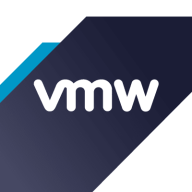


Find out what your peers are saying about Dell Technologies, VMware, Nutanix and others in HCI.
Starting with a smaller infrastructure and scaling as required allows us to save costs initially.
The technical support from Nutanix Cloud Infrastructure (NCI) is excellent, deserving a nine out of ten rating.
I would rate their support nine points.
I am not satisfied with VMware support, particularly with the reaction times, SLAs, and those kinds of issues.
The scalability of Nutanix Cloud Infrastructure (NCI) deserves an eight out of ten rating, as there is no solution that is 100% efficient and there is always room for improvement.
It supports up to 64 nodes in a cluster, allowing us to add nodes and expand the cluster as needed.
Compared to VM, we find it most stable.
Regarding stability, I would rate Nutanix Cloud Infrastructure (NCI) a seven out of ten.
In terms of stability, I give VMware vSAN nine points.
We hope Nutanix can integrate inside our current license module.
I would suggest that Nutanix Cloud Infrastructure (NCI) should develop their own P2V (physical to VM) tools instead of requiring users to rely on third-party solutions.
A proper monitoring tool that encompasses both applications and infrastructure would help in quickly resolving issues.
Maybe incorporation of automation to build clusters in a more automated way would be beneficial.
It costs more compared to VMware due to different licensing areas.
The pricing is renewed every year, at almost $100,000 per year.
This has resulted in a slight cost increase.
When technology development or devops teams request server provisioning, the setup time has been reduced from hours to less than 20 minutes.
The replication method between Nutanix clusters is a valuable feature.
Hot add features are available by default in vSphere, allowing us to immediately increase memory, CPU, and hard drive without any downtime.
A one-stack solution from one vendor is the main benefit here.



Nutanix Cloud Infrastructure (NCI) is a top-ranking HCI software, cloud management tool, and Software Defined Storage (SDS) tool that is marketed as the foundation for users' hybrid clouds. It offers a powerful and secure hyperconverged infrastructure to deliver all data and applications at any scale and on any cloud. The solution offers a complete software stack that allows users to unify their hybrid cloud infrastructure.
NCI’s services include computer, storage and network, hypervisors and containers, and deployment in public or in private clouds. The product also comes with built-in resilience, disaster recovery capabilities, self-healing, and high-security capacities. It provides further deployment flexibility through several software and hardware options and platforms. NCI includes a full set of enterprise capabilities. It can also be deployed on a wide range of servers from popular manufacturers.
The capabilities of the product are categorized into three main groups:
Outside of these categories, NCI also offers other capabilities:
Nutanix Cloud Infrastructure (NCI) Features
Nutanix Cloud Infrastructure (NCI) offers its customers various features and tools in each of the previously mentioned categories. The available features for users currently include:
Nutanix Cloud Infrastructure (NCI) Benefits
The product offers various benefits to users who utilize its capacities. Some of these include:
Reviews from Real Users
According to Gerhard J., an IT manager at Q4 Fuel, Nutanix Cloud Infrastructure (NCI) provides serious reliability and stability across the entire system makes for ROI.
A solutions architect at a computer software company describes NCI as a stable, straightforward to set up, and scalable solution.
Sangfor HCI is an IT infrastructure platform built on converged architecture. It integrates server virtualization, distributed storage, and networking. Sangfor HCI provides a unified management platform that converges compute, storage, networking, and security on a single software stack. This approach delivers a simplified architecture, ease of use, and reliability for business-critical applications.
Hyperconverged infrastructure is a unified system of data storage. HCI combines storage, computing, networking, and management, unlike traditional storage solutions. HCI systems enable you to build your private cloud, expand to a public cloud, or have your own true hybrid cloud. Sangfor HCI presents two product models: The Sangfor HCI server appliance is a hardware version that enables easy deployment. Sangfor HCI software is the digital version combined with a third-party server that enables flexible deployment.
Sangfor HCI supports Windows systems on desktop and is web-based. Its range of use cases cover a wide spectrum of industries, from healthcare to manufacturing. It is applicable for mid- and large-sized businesses. The software is customizable. Users can customize the logo and contact information in the user interface.
Benefits and Features
Use Cases
Sangfor HCI can be applied tin various scenarios:
Reviews from Real Users
Gabriele P., Senior Software and Systems Engineer at SAMU.IT, says "It is flexible like a hyper-convergence system. You can add nodes, and you can scale to have better performance and stability. I also like the backup feature, the recovery system, and the web interface GUI to handle everything."
A Junior Solutions Engineer at a tech services company adds that "Sangfor has many solutions, and you can easily manage their machine servers with just one management. They're always striving for greatness, and they continuously update their products. For example, they have now built endpoint security within the firewall. They are continuously improving not only the security but also all other products."
VMware vSAN is a software-defined storage product that is used in collaboration with VMware ESXi hypervisor and that provisions and manages storage based on policies, regardless of the underlying hardware. The solution enables you to prime your business for growth through its seamless evolution (it is integrated with vSphere and requires no new tools), its flexibility, and its multi-cloud capabilities. As an industry-leading software, VMware vSAN provides high levels of performance with minimal impact on CPU and memory.
VMware vSAN Features
VMware vSAN has many valuable key features. Some of the most useful ones include:
VMware vSAN Benefits
There are many benefits to implementing VMware vSAN. Some of the biggest advantages the solution offers include:
Reviews from Real Users
Below are some reviews and helpful feedback written by PeerSpot users currently using the VMware vSAN solution.
PeerSpot user Yves S., CEO, Cloud Evangelist at Comdivision Consulting GmbH, says, “vSAN gives us a lot of advantages when we need to expand resources. We have an overall larger host infrastructure, and we split that up for specific customer test and use cases. In that specific scenario, we can easily add more hosts or reduce the number of hosts in the environment.”
A reviewer who works in Infrastructure Security explains, “The ease of use is great. The initial setup and upgrade process was pretty straightforward. And, technical support is great.”
Laurent N., Director at Softlogic, comments, "The feature that I have found most valuable is that it is easy to deploy. It is easy to create and delete virtual servers. It is easy to create the load balancing and the clustering."